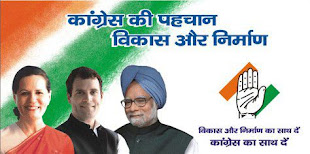Beena Yadav
Providing banking facilities across length and breadth of the country, particularly in rural areas, has always been a great challenge for the successive governments since Independence. Nationalisation gave a big boost to expansion of banks in rural areas with Public Sector Banks becoming important instruments for advancement of rural banking and changing lives of rural populace. However, financial inclusion remains one of the biggest challenges before our nation even today as only about 38% of bank branches are in rural areas and only 40% (approx.) of the country’s population have bank accounts. Though strides have been made in expansion of bank branches from around 8700 at the time of bank nationalization in 1969 to around 87,000 presently, only 32,000 (approx.) are in rural areas. The average population per bank branch is around 13,900. To address this need the Union Finance Minister in his Budget Speech 2010-11 directed all banks, to provide appropriate banking facilities to habitations having population in excess of 2,000 by March, 2012 using various models and technologies including branchless banking through Business Correspondents. Accordingly, the banks through the forum of State Level Banker Committees (SLBCs), have formulated their roadmaps for Financial Inclusion and have identified approximately 73,000 habitations having a population of over 2,000 for providing banking facilities. These habitations have been allocated to Commercial Banks, Regional Rural Banks and Cooperative Banks for providing banking facilities in a time bound manner. This would provide new bank accounts to around 5 crore rural households.
Accordingly, a nationwide programme on financial inclusion, “Swabhimaan” was launched in February, 2011 by the Government, which is focused on bringing the deprived sections of the society in banking network to ensure that the benefits of economic growth reach everyone at all levels. This campaign is a big step towards socio-economic equality by bringing the underprivileged segments of Indian population into the formal banking fold for the first time.
“Swabhimaan” is a path-breaking initiative by the Government and the Indian Banks’ Association to cover economic distance between rural and urban India. This campaign promises to bring basic banking services to 73,000 unbanked villages with a population of 2,000 and above by March, 2012 and at least 5 crore new accounts will be opened. The movement will facilitate opening of banks accounts, provide need-based credit, remittance facilities and help to promote financial literacy in rural India. The programme will increase the demand for credit among the millions of small and marginal farmers and rural artisans who will benefit by having access to banking facilities.
This financial inclusion campaign named, “Swabhimaan” aims at providing branchless banking services through the use of technology. The vision for this programme is social application of modern technology. Banks will provide basic services like deposits, withdrawals and remittances using the services of Business Correspondents also known as Bank Saathi. This initiative also enables Government subsidies and social security benefits to now be directly credited to the accounts of the beneficiaries so that they could draw the money from the Business Correspondents in their village itself. The Government hopes to reach the benefits of micro insurance and micro pension products to the masses through this banking linkage. It would now be possible for the large number of migrant workers in urban areas to remit money to their relatives in distant villages quickly and safely.
The facilities provided through banking outlets will enhance social security by facilitating the availability of allied services in course of time like micro insurance, access to mutual funds, pensions, etc. Banking facilities like Savings Bank, recurring Deposits, Fixed deposits, Remittances, Overdraft facility, Kisan Credit Card (KCCs), General Credit Cards (GCC) and collection of cheques will be provided.
The Banks are also working together with the Unique Identification Authority of India (UIDAI) for enrolment, opening bank accounts and also to facilitate transfer of government subsidies and other payments.
The success of this programme will depend on the proper utilization of the Business Correspondents (BCs) or Bank Saathis, who are persons engaged by Banks to create a closer relationship between the formal financial system and the people living in the rural hinterland, far away from brick and mortar bank branches. The BCs will help in making available banking facilities to the interior areas through various handheld mobile devices and other technologies that reduce cost and have the ability to record banking transactions and to communicate the record of such transactions to the Bank using the internet facilities / GPRS.
The progress of “Swbhimaan” programe will be monitored through the State Level Bankers Committee mechanism. District Magistrates/Collectors are being sensitized in this regard to ensure proper monitoring of the programme through coordinated efforts of all stake-holders. The State Governments have been advised to route all Government benefits and social security payments through the banking system so that the benefits reach the beneficiaries timely and efficiently and leakages are reduced substantially.
“Swabhimaan” campaign is expected to benefit millions of small and marginal farmers and rural artisans by providing them easy access to credit at lower rates and save them from clutches and exploitation by moneylenders.


























0 Comments